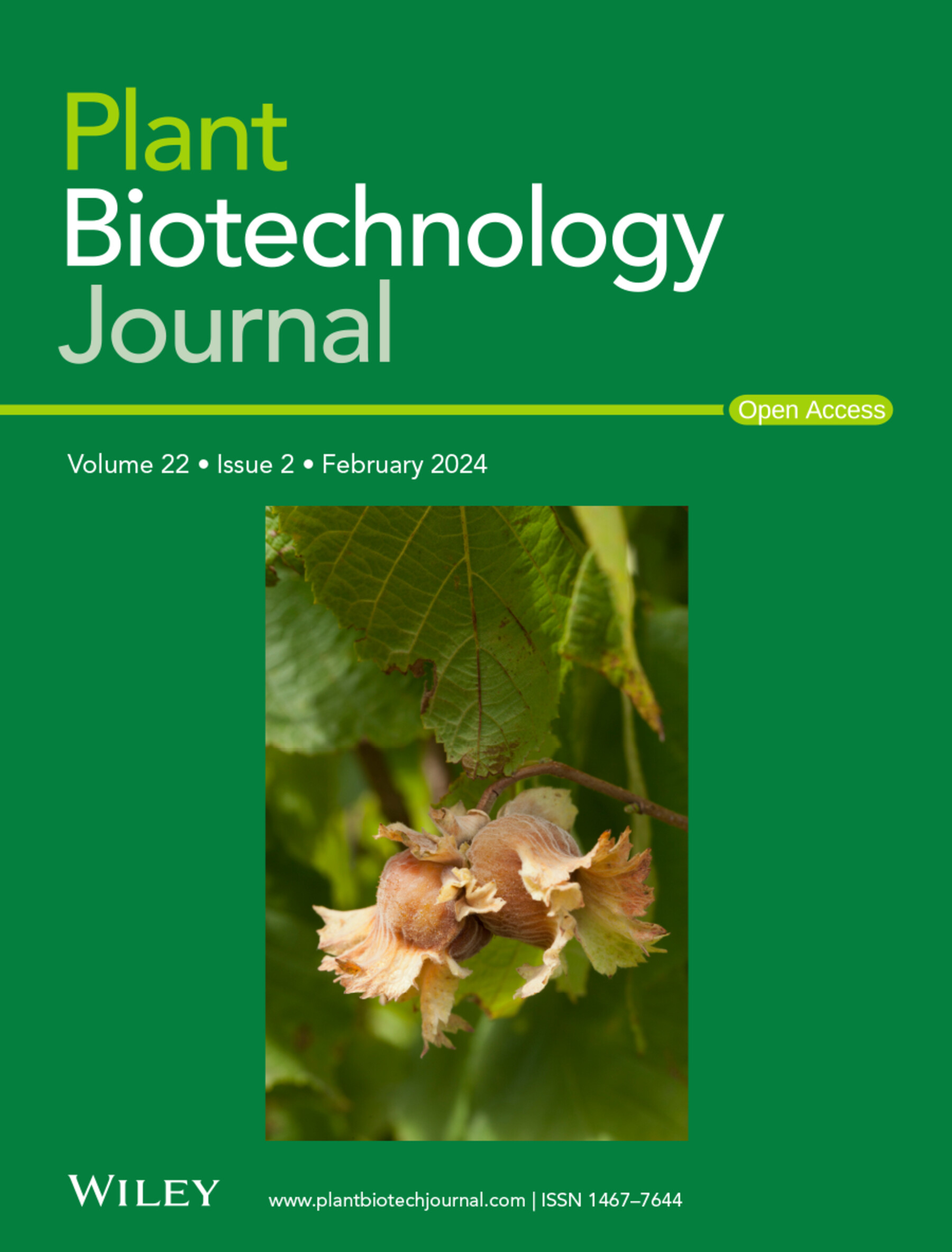嵌合基因orf610a通过破坏ATP合酶的组装而降低棉花花粉的育性
IF 10.1
1区 生物学
Q1 BIOTECHNOLOGY & APPLIED MICROBIOLOGY
引用次数: 0
摘要
细胞质雄性不育(cytoplasmic male sterility, CMS)是开发杂种活力和研究核-细胞质相互作用的关键工具。尽管CMS - D2系统长期用于棉花育种,但其潜在机制仍然难以捉摸。我们的研究揭示了线粒体嵌合基因orf610a通过与ATP合成酶亚基D (atpQ)的相互作用而降低棉花育性的作用。通过酵母双杂交、双分子荧光素酶互补和转基因过表达研究,我们发现orf610a和atpQ之间存在一种独特的相互作用,这种相互作用会干扰ATP合成酶的组装。这种相互作用导致ATP水平下降,H2O2产量增加,线粒体功能障碍,这与花粉败育有关。对3个独立过表达系的转录组学和生化分析鉴定出1711个差异表达基因(DEGs),其中10个与活性氧(ROS)和ATP产生有关。表型分析证实orf610a表达导致花药发育异常,花粉活力降低,导致不育。值得注意的是,扫描电镜和透射电镜分析突出了orf610a‐过表达系花粉的结构异常,支持ATP合酶功能改变的有害影响。我们的研究结果表明,orf610a与ATP合成酶组分的相互作用破坏了正常的线粒体功能和能量产生,导致棉花雄性不育。了解CMS中涉及的分子相互作用可以帮助制定策略来操纵作物的不育性,并提供对线粒体-核相互作用的见解,这可能会影响未来的育种计划。本文章由计算机程序翻译,如有差异,请以英文原文为准。
The chimeric gene orf610a reduces cotton pollen fertility by impairing the assembly of ATP synthase
SummaryCytoplasmic male sterility (CMS) serves as a pivotal tool for exploiting hybrid vigour and studying nuclear‐cytoplasmic interactions. Despite its long‐standing use in cotton breeding, the underlying mechanisms of the CMS‐D2 system remain elusive. Our study unravelled the role of the mitochondrial chimeric gene orf610a in reducing fertility in cotton through its interaction with ATP synthase subunit D (atpQ). Using yeast two‐hybrid, bimolecular luciferase complementation, and transgenic overexpression studies, we identified a unique interaction between orf610a and atpQ, which disturbs the assembly of ATP synthase. This interaction leads to a decrease in ATP levels, an increase in H2 O2 production, and mitochondrial dysfunctions, which are associated with pollen abortion. Transcriptomic and biochemical analyses of three independent overexpression lines identified 1711 differentially expressed genes (DEGs), among which 10 were related to reactive oxygen species (ROS) and ATP production. Phenotypic analysis confirmed that orf610a expression causes abnormal anther development and reduced pollen viability, contributing to sterility. Notably, SEM and TEM analyses highlighted structural anomalies in the pollen of orf610a ‐overexpressing lines, supporting the detrimental impacts of altered ATP synthase function. Our findings suggest that orf610a's interaction with ATP synthase components disrupts normal mitochondrial function and energy production, leading to male sterility in cotton. Understanding the molecular interactions involved in CMS can aid in developing strategies to manipulate sterility for crop improvement, offering insights into mitochondrial‐nuclear interactions that could impact future breeding programmes.
求助全文
通过发布文献求助,成功后即可免费获取论文全文。
去求助
来源期刊

Plant Biotechnology Journal
生物-生物工程与应用微生物
CiteScore
20.50
自引率
2.90%
发文量
201
审稿时长
1 months
期刊介绍:
Plant Biotechnology Journal aspires to publish original research and insightful reviews of high impact, authored by prominent researchers in applied plant science. The journal places a special emphasis on molecular plant sciences and their practical applications through plant biotechnology. Our goal is to establish a platform for showcasing significant advances in the field, encompassing curiosity-driven studies with potential applications, strategic research in plant biotechnology, scientific analysis of crucial issues for the beneficial utilization of plant sciences, and assessments of the performance of plant biotechnology products in practical applications.
 求助内容:
求助内容: 应助结果提醒方式:
应助结果提醒方式:


